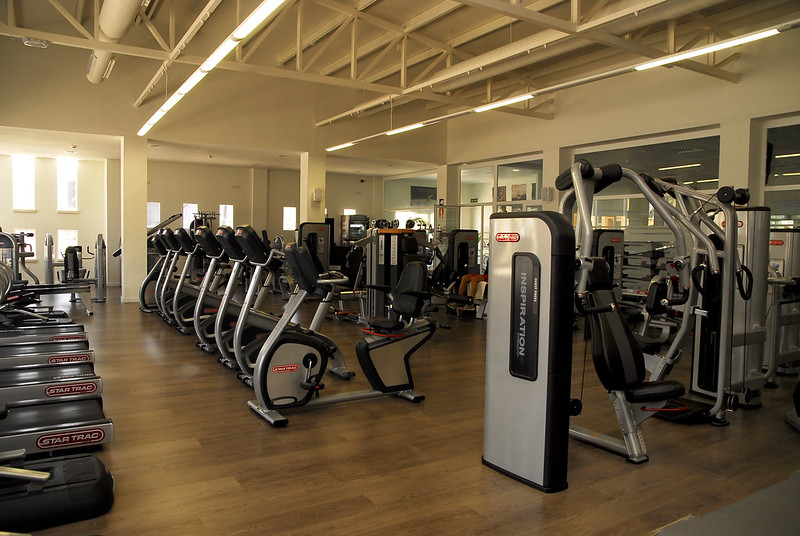The sports industry may incur losses of close to 30% of production and employment, in the medium term
The sports industry may incur losses of close to 30% of production and employment, in the medium term
A simulation by researchers at the UPF Sports_Lab Studies Centre enables defining multiple, more or less optimistic scenarios concerning the speed and intensity with which this sector will get “back to normal” in 2020. The study performs estimates for each of the sports subsectors in Catalonia and also as a whole, and measures the results in terms of contribution to the value of production, employment and gross value added (GVA).

In the context of the current crisis caused by the coronavirus, sport, which has been deemed a non-essential sector, is suffering the consequences of the suspension of activities and of the possibility of doing physical exercise and sport in the conditions that were normal before the outbreak of the pandemic and, therefore, is being severely affected.
A study by researchers at the UPF Sports_Lab Studies Centre has done a simulation that enables envisaging a clear economic recession in the immediate future for the sports industry as a result of the direct and indirect effects of COVID-19.
Its main purpose is to help structure the measures now to be adopted.
The simulation was conducted in late April 2020 in a scenario of great uncertainty which still persists to date, despite the established schedule for the lifting of lockdown. It provides a forecast (not a prediction or a measurement of results, as the authors point out) based on multiple, more or less optimistic scenarios. Its main purpose is to help structure the measures now to be adopted.
The authors of the study “COVID-19 and sport: forecasts of economic impact” are three researchers at the UPF Sports_Lab Studies Centre: Júlia Bosch; Jaume Garcia, full professor with the Department of Economics and Business at UPF, and Carles Murillo, a lecturer at the Department of Experimental and Health Sciences and of the UPF Barcelona School of Management.
They made the forecast based on two main data sources: the financial contribution of the different types of producers in the sector in Catalonia (data for 2013) and the opinions and preliminary financial informationprovided byindustry experts and key stakeholders.
Depending on the situation in the coming months, the study allows approximating the loss in turnover and employment for each of the 28 producers (or subsectors) considered, divided into private sector, non-profit organizations, public sector and education sector, but also their importance in relation to the industry as a whole.
Three periods and three different scenarios of impact on producers
To perform the simulation, the study divides the 2020 financial year into three periods: from the beginning of the year to the declaration of the state of alarm; the period during which productive activities were most affected, and finally the recovery phase. The duration of the last two periods could account for as many as nine of the twelve months of 2020.
For the periods of greatest impact and recovery, two parameters have been established: the duration of these phases, expressed in months, and the degree of impact, measured as the percentage of production maintained in the corresponding period.
The most optimistic scenario (Scenario 1: 2 or 3 months’ lockdown and rapid recovery) is identified by the fact that, for most producers, the period of greatest impact lasts two or three months. This period involves a significant stoppage to their activities to later enter an immediate recovery phase for the activity. Under such assumptions, the overall drop in turnover by the sports industry in 2020 would reach 15.7% of the production value, 15.9% of gross value added, and 16.9% of jobs (in full-time equivalent days).
In an alternative scenario (Scenario 2: 2 or 3 months’ lockdown and moderate recovery), which could be labelled intermediate, recovery is slower and more variable depending on the type of producer. In this event, the figures above (both regarding turnover and production and employment value added) worsen by approximately 14 percentage points each, and point to a loss of around 30%.
The most pessimistic scenario (Scenario 3: 4 or 5 months’ lockdown and moderate recovery) is defined considering that most producers will be severely affected for 4 or 5 months, followed by slow recovery until the end of the year. Under these conditions, the economic impact would add a further 20 percentage points of losses, both due to the fall in the value of production, the GVA and employment, and would result in a reduction of around 48% of the GVA and production, and of 51% of employment.
Different effects from the financial and property crisis, with some subsectors reinforced
According to the authors, the current health crisis will have a different impact from the financial and property crisis of 2008 and 2009, when the sports industry generally withstood the better than other economic sectors. This is mainly due to the fact that the COVID-19 crisis has led to a complete shutdown of the sports industry.
But, they highlight that some subsectors have been reinforced and they all share a common denominator: their commitment to technology and digital transformation. Examples include home entertainment, and e-sports in general. These needs have increased online purchases of sports equipment and online training and have boosted new opportunities for startups, especially technology-based ones.
“The results of our study are subject to any changes that may arise as a result of the health implications of the pandemic and its evolution, as well as government measures to relax, or not, the shutdown currently affecting the industry”, warn the authors, who would favour adding tactical intelligence and creativity to the decision-making by the authorities and promoting the significant role of technology.
